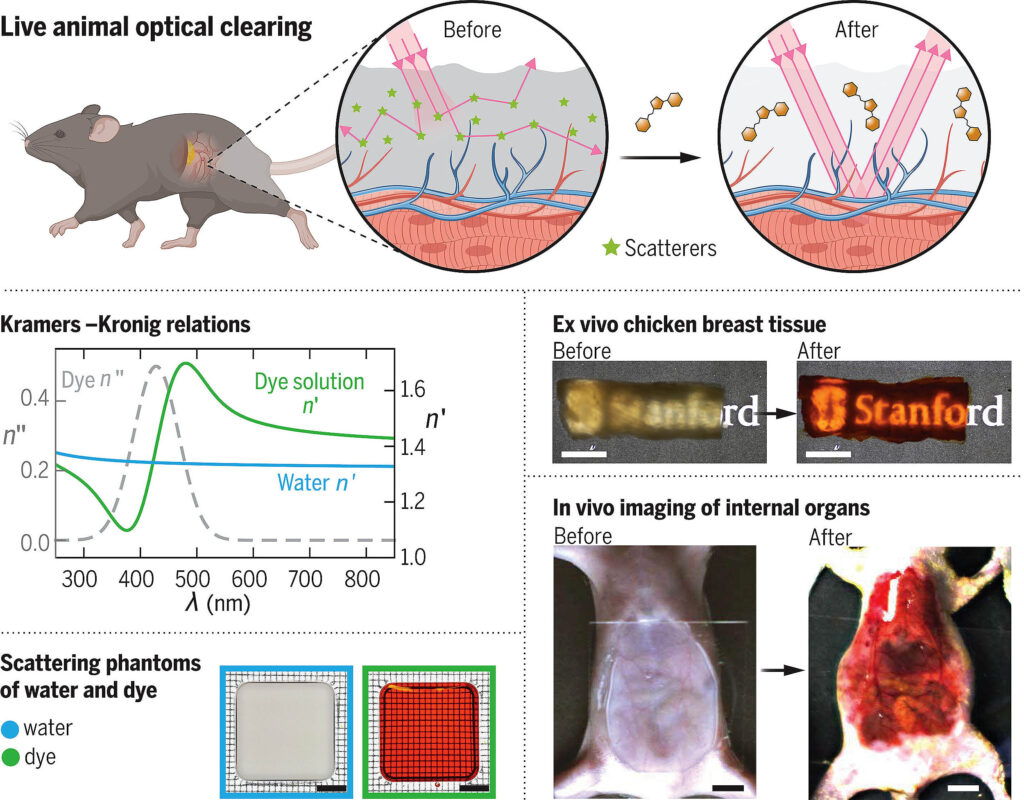
Doritos, a beloved snack across the globe, have unexpectedly contributed to a breakthrough in scientific research. A dye used in these chips has enabled scientists to make mouse skin temporarily transparent, effectively creating “see-through” mice. This dye, known as tartrazine, is a bright yellow-orange additive also found in various foods, medicines, and cosmetics.
By mixing tartrazine with water and applying it to the skin, researchers have discovered that cameras tuned to specific wavelengths can see through the top layers of tissue. This development is significant for those studying living systems, as it allows for non-invasive observation inside the body. Typically, light scatters when passing through tissue, causing images to blur. However, this simple and safe topical mixture offers a clearer view, even if only briefly, potentially revolutionizing research methodologies.
Tartrazine and the Quest for Invisible Skin
Researchers at Stanford University detailed this innovative method in the journal Science. The approach leverages basic optics to reduce light scatter and enhance the clarity of images captured from living tissue. The technique involves altering how water bends light, aligning it more closely with the fats present in the skin.
“For those who understand the fundamental physics behind this, it makes sense; but if you aren’t familiar with it, it looks like a magic trick,” said Zihao Ou, the lead author of the study and an assistant professor of physics at The University of Texas at Dallas.
The Science Behind Transparency
Living tissues like skin, fat, and muscle are composed of numerous tiny components that refract light differently, causing significant scatter. The refractive index, a measure of how much a material bends light, is around 1.33 for water in tissue, while lipids have a higher index, between 1.45 and 1.48. This discrepancy leads to the scattering of light.
By closing this gap, the path of light straightens, resulting in less scatter and sharper images. Tartrazine plays a crucial role by absorbing blue and near-ultraviolet light. This absorption alters the refractive index of water, making it more similar to surrounding fats, thereby reducing scatter and enhancing image clarity.
From Gels to Living Mice
The research team initially tested this method on gels and thin tissue slices, observing reduced scatter where it mattered most. They then applied a diluted tartrazine solution to live mice, noting that to the naked eye, the area appeared darker due to blue light absorption. However, cameras set for red or near-infrared wavelengths captured a more transparent image for a brief period.
This transparency allowed researchers to observe organ movements beneath the abdomen, track the gut’s rhythm, and map blood vessels on the head without invasive procedures. Once the dye was washed off, the mice returned to their normal state, with the dye being safely excreted in urine.
“It’s important that the dye is biocompatible – it’s safe for living organisms,” Ou stated. “In addition, it’s very inexpensive and efficient; we don’t need very much of it to work.”
Implications for Future Research and Human Health
Most existing methods for tissue imaging work on dead samples, often involving dehydration or chemical fixation, which can destroy live dynamics. This dye-based method, however, preserves tissue vitality and flexibility, providing a temporary window to capture dynamic biological processes.
This innovation could significantly impact everyday lab work, enabling researchers to track blood flow, observe organ motion without surgery, and study nerve-muscle coordination with minimal invasiveness. It also offers educational benefits, allowing students to learn from live systems without harsher interventions.
“Optical equipment, like the microscope, is not directly used to study live humans or animals because light can’t go through living tissue,” Ou explained. “But now that we can make tissue transparent, it will allow us to look at more detailed dynamics. It will completely revolutionize existing optical research in biology.”
The principles behind this method are not limited to tartrazine. Researchers are exploring other substances that could outperform it, aiming to reduce scatter and sharpen images with safe, affordable, and easy-to-apply materials. This breakthrough holds promise for future optical devices, potentially enhancing their ability to “see” deeper into the body’s surface.
The full study is available in the journal Science.
—
Like what you read? Subscribe to our newsletter for engaging articles, exclusive content, and the latest updates.
Check us out on EarthSnap, a free app brought to you by Eric Ralls and Earth.com.







